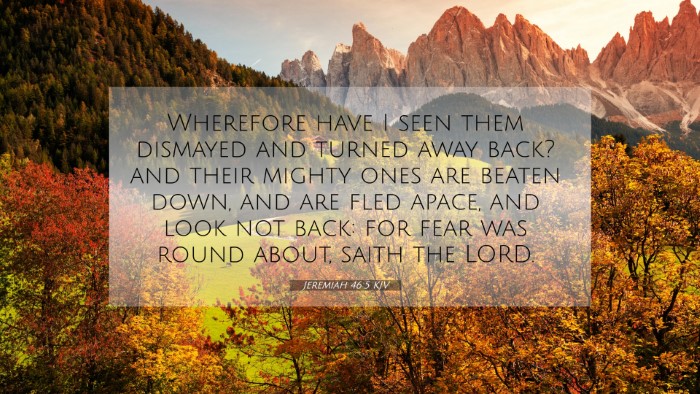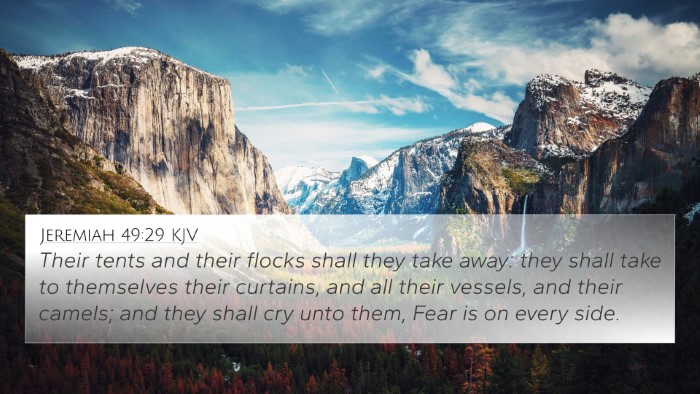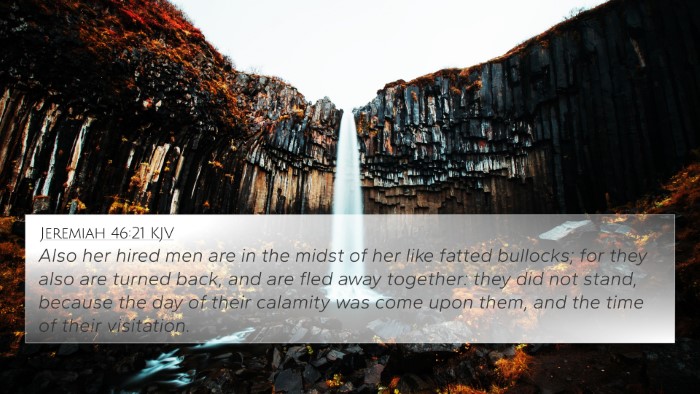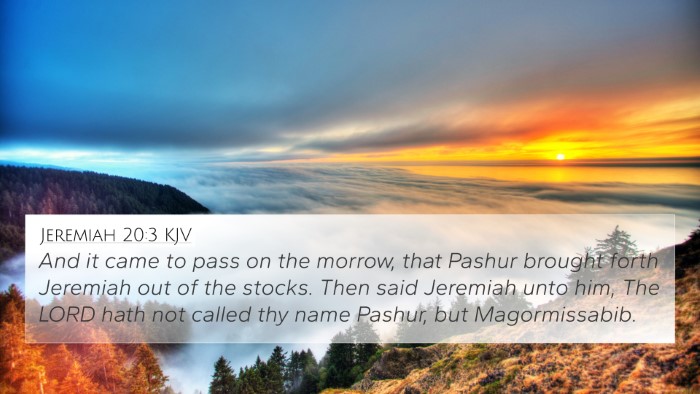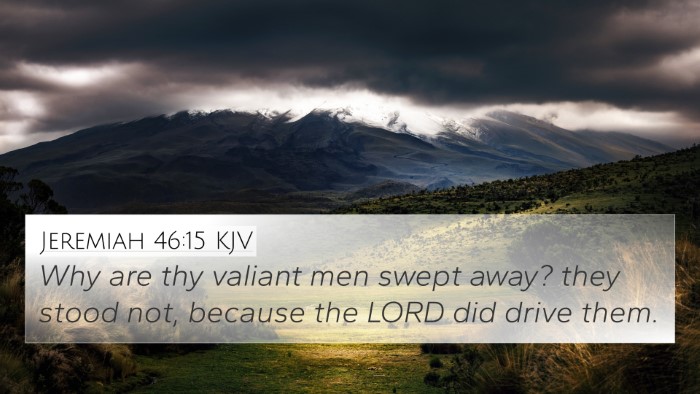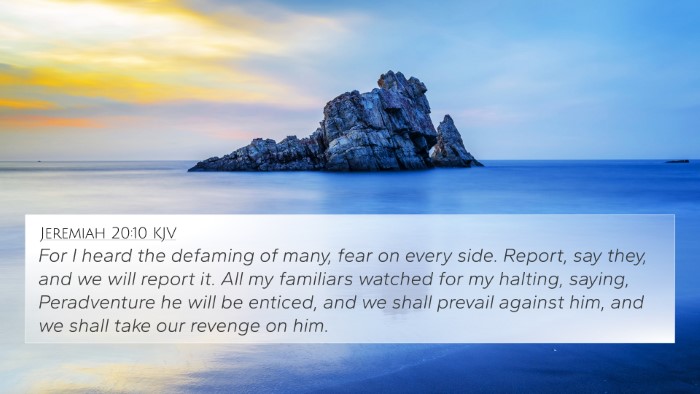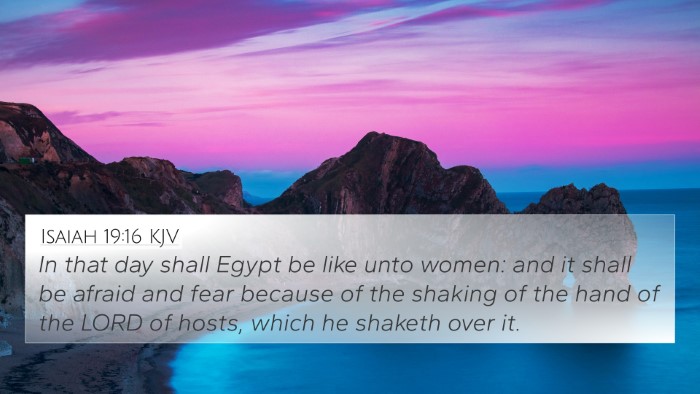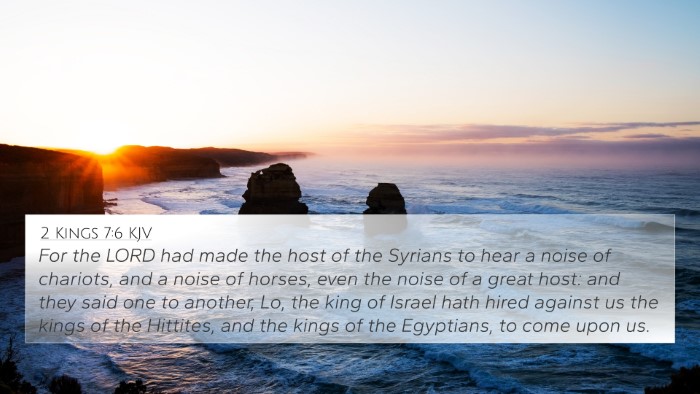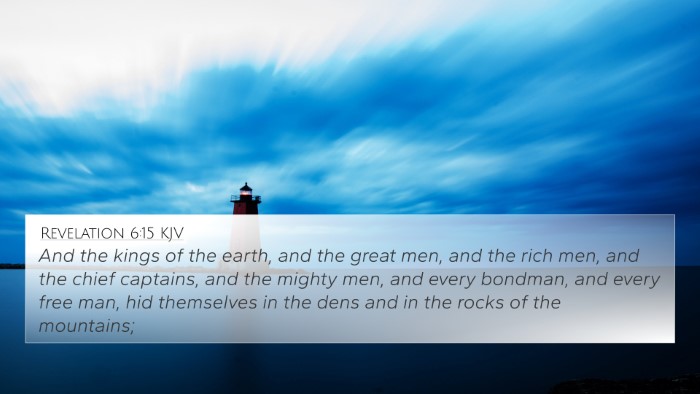Understanding Jeremiah 46:5
Jeremiah 46:5 states: "What do I see? They are afraid; they are in pain like a woman in labor." This verse provides a vivid image of the distress and turmoil faced by the people of Egypt during the impending conflict with Babylon. The use of the metaphor of labor pains illustrates the profound fear and anguish experienced in the face of certain defeat.
Verse Meaning and Insights
Jeremiah 46:5 serves as both a prophetic declaration and a psychological portrayal of the emotions wrought by impending conflict, particularly as it relates to the nation of Egypt's perilous situation. The verse essentially conveys the following key insights:
- Fear and Pain: The metaphor of labor pains signifies not only physical pain but profound emotional turmoil. This reflects the human condition of fear in the face of existential threat.
- Prophetic Language: The message in Jeremiah employs vivid imagery to resonate with the listeners, enhancing the urgency of the prophecy.
- Divine Judgment: This verse is indicative of the coming judgment from God against the nations that defy Him, reflecting the historical context of territorial conflicts.
- Connection to Other Scriptures: The emotional pain delineated in this verse can be paralleled in various other Biblical texts, contributing to a deeper understanding of the thematic representations of fear and anxiety in scripture.
Connections Between Bible Verses
This verse, while singular in its message, intertwines with various other passages that enhance its meaning through cross-referencing Biblical texts. Below are some noteworthy connections:
- Isaiah 19:2-4 – A similar pronouncement concerning Egypt’s despair and internal strife.
- Isaiah 66:7-9 – The imagery of labor pains recurs, symbolizing the anxiety of bringing forth a new reality amid strife.
- Micah 4:9-10 – Reference to the people’s pain and fear as they confront dire circumstances but within a context of future restoration.
- Revelation 12:2 – Labor pains indicate a significant coming event, linking the anguish to expectations of a new era or climax of prophetic events.
- Lamentations 2:10 – A depiction of deep sorrow that parallels Jerusalem’s own grief, showcasing the widespread nature of despair in prophetic literature.
Thematic Bible Verse Connections
Thematic connections reveal how Jeremiah 46:5 relates to broader biblical messages:
- Judgment and Redemption: Many verses illustrate the divine judgment of nations, which are often followed by themes of redemption and hope.
- Fear and Comfort: There is a recurring theme in scripture that juxtaposes human fear with God’s providence and promises of comfort.
- Conflict and Resolution: Throughout the Bible, there are numerous accounts where conflict leads to divine intervention, establishing a meaningful arc of struggle leading to new beginnings.
Cross-Referencing Bible Study
Studying Jeremiah 46:5 through cross-references provides a profound understanding of interconnected biblical themes. Here are tools and methods for cross-referencing:
- Bible Concordance: Use a Bible concordance to identify key terms and concepts that link to this verse.
- Bible Cross-Reference Guide: Leverage cross-reference guides to see thematic parallels between Jeremiah and other prophetic texts.
- Comparative Bible Verse Analysis: Compare this verse with other passages that evoke similar emotions or subject matter.
- Bible Chain References: Create chains of references from this verse to further analyze its implications within both the Old and New Testaments.
Identifying Connections Between Old and New Testament
A study of this verse encourages readers to link texts across testaments:
- Acts 2:24 – Just as pain births new life (labor), so does the resurrection of Christ bring forth hope and renewal.
- Romans 8:22 – Creation itself groans in anticipation, paralleling the pain depicted in Jeremiah 46:5.
Conclusion
In conclusion, Jeremiah 46:5 encapsulates key themes of fear, prophecy, and divine judgment. Understanding its implications through scriptural cross-referencing not only enhances our comprehension of this solitary verse but also enriches our grasp of the broader biblical narrative. As you study this verse, consider employing the tools and methods discussed for a more comprehensive understanding of the interconnectedness of scripture.


